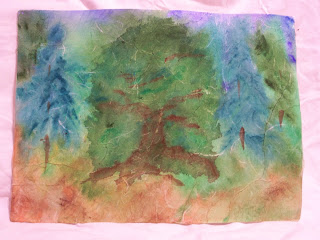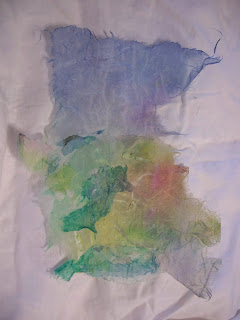



Tashlish is a part of the Days of Awe. It is a short, sweet ceremony which most traditionally is done after services on the first day of Rosh HaShana. One goes, usually with other people, to living water such as a river or stream and names sins one is repentent of while throwing small bits of bread into the water. Usually the bread will be bits of challah, that most beloved of Shabbat and Yom Tov (good day/holiday) meals. I have usually participated in this ceremony with people from my congregation shortly after services end.
For some reason this fall, there has been a very present part of me which has needed to be in the country alone. The same was true throughout the holidays. On the first day, I did not participate. On the second day, the congregation was doing it again; someone commented that, while it was traditionally done the first day, Tashlish can also be done any of the 8 Days of Awe.
That clinched it for me. I gathered a bit of challah and set out for the moraine. Of course, it started raining. I eventually gave up the idea of making Tashlish that day as it was too wet for much wandering. It did make for some good photography, though.
That was a Friday. That Sunday, a gorgeous day, I went back with the intent of performing the ceremony while out. I forgot the challah. I stopped for a hot dog at one point and decided to save a bit of the bun for that. Of course, I was on auto-pilot and snapped the last bit of bun into my mouth. I'm faced with buying another sandwich, a loaf of bread or something to complete the ceremony with.
Later I stop again and review my choice of breads. Somehow it seems wrong to perform tashlish with Wonder Bread, I don't find a traditional bread/roll to use. I end up buying a lovely loaf of chocolate almond pumpkin bread.
I drive around until I'm tired and in pain. Whenever I stop, I cannot get close enough to the water to ensure I can toss the bread successfully into the stream, the water appears stagnant or is covered with weeds.
Eventually I drive back into the city. I drive around some more. Finally, I end up in a park. I name my sins and toss a few bits of bread. The ducks and geese immediately start to head in my direction and stop, confused, after I quit tossing these very few small bits.
Did I wander from a strictly traditional way of performing this ceremony? Definitely. And yet, I think I was the most honest with myself and felt more regret than I have when doing it with others in the past. I'm just that masked in the presence of others. Did G!d mind? I doubt it.





















